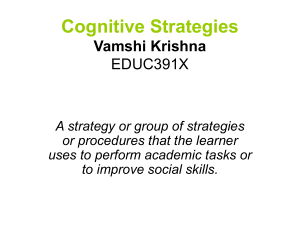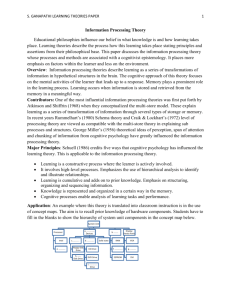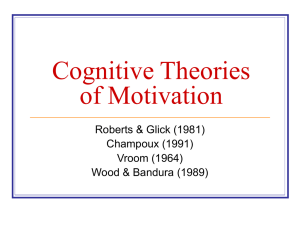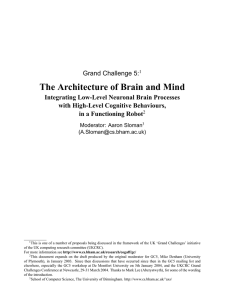Chapter 2: Gender Identity
advertisement
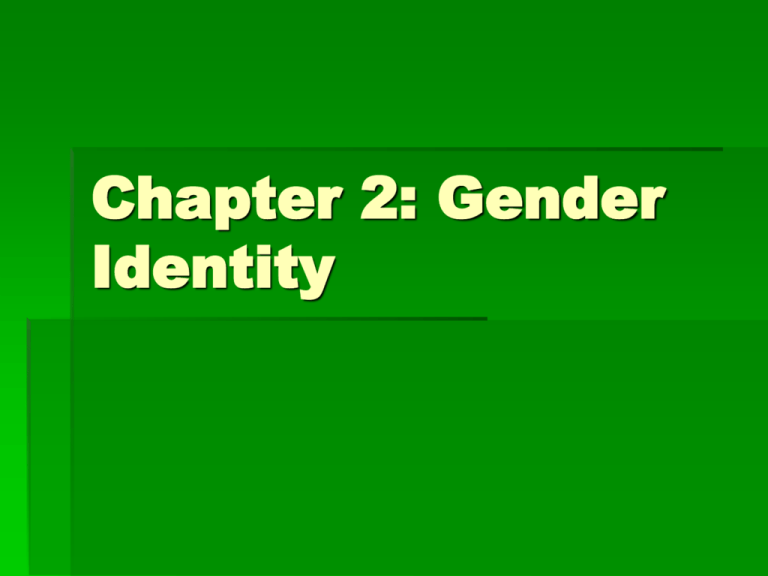
Chapter 2: Gender Identity Please Note: These slides are meant to help students think about the material. They are not meant to replace reading the material or taking notes. Using these slides as your only means of garnering information could harm your ability to understand the content of this class. Please turn off cell phones, MP3 players and other technology of which I’m unaware. Sex/Gender System Organizing society in a way such that men and women are pressured to perceive themselves and act “opposites” and in which men as a group have more power than women as a group as a result. Sex/Gender System 1) If female/male were purely biological there wouldn’t need such elaborate rituals and control mechanisms to ensure people stay “appropriate.” 2) Sex/Gender system is an organizing system that is created through a complex interaction between biology and ritual, rules, expectations and action. Theories of Gender Identity 1) What do we mean by the term identity? 2) Most theories are simplistic. They focus on: One cause. Are static over time Don’t allow for variation across cultures. Biological Theory of Gender Identity 1) Biological differences exist; as do similarities. We tend to focus on the differences. A) Hormonal differences and gender identity B) Brain lateralization theory and gender identity theory Biological Theory Cont 2) Problems - It’s hard to show cause/effect (nonspuriousness and temporal order). Often theories are reductionist and deterministic. Selective Perception affects what we observe. Third Genders exist. Gender and Social Institution and Gender Identity 1) Sex/Gender system, Sexuality, Race/Ethnicity are organizing principles which dictate rules and expectations and teaches people what is appropriate. Roles – prescribed expectations, duties and rights. Gender is built into the rules of society. For examples, Monopoly. You have to have a winner/losers. With Gender, you can only have two genders in our society. When there are more, we make those “others” deviants” or “cheaters.” Socialization Theory and Gender Identity 1) Peers, Parents, Teachers, Religious leaders teach us through sanctions and expectations what it means to be male/female of various races/ethnicities, ages, classes. 2) Tools of Socialization 1) Regulating Transgressions (punishments) 2) Hegemony – Cultural tools which convince people that there is not other way or organizing except the present way. Thus, oppression is inevitable. Books, Movies, T.V shows. Parents “protect” their children. Socialization Theory 3) Problems Theory sees people as passive. Symbolic Interactionism and Gender Identity 1) What we become emerges through our relationship with others and interpreting the symbols of society which help us interpret and act upon reality. 2) Tools of SI A) Taking the role of the other – Mead – seeing yourself through others B) Doing Gender SI 1) Problems While sees people as active, does not take into account institutions and their affect on gender identity. Identification Theory and Gender Identity 1) Chodorow– Psychoanalyst Mothering leads to attachment in girls and individuation in boys. Unconscious process in which boys learn to devalue connections and girls put premium on them. Tools: Mothering Identification Theory Problems: Too much focus on family Assumes family form is static and constant Cognitive Developmental Theory and Gender Identity 1) Stage theory that argues children interpret information about gender as it relates to their cognitive stage. Tools: Schemas – cognitive stage affects information and how it is interpreted They learn gender is dichotomous and they must fit in one category. Over time, they learn gender is NOT fluid. Cognitive Developmental Theory Problems They claim gender is fixed at a young age. Ignore Institutions.





